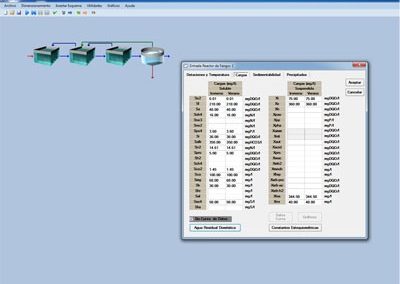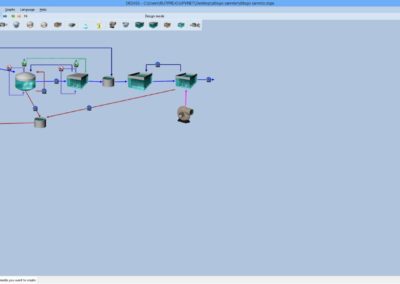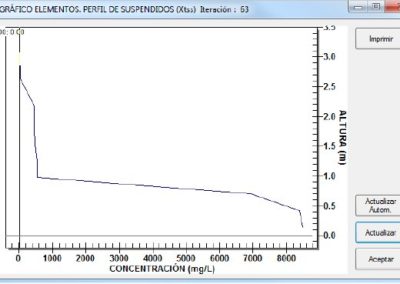DESASS
Simulator of urban wastewater treatment plants – WWTP

Description
Characteristics
Images
Description
DESASS (Design and Simulation of Activated Sludge Systems) is a simulator of urban wastewater treatment plants set up under Windows, designed and optimized for the investigation of organic matter and nutrient elimination processes. It is focused on personnel training and educational purposes. In the design of DESASS a special emphasis has been placed on the speed of calculation, graphic presentation and user friendliness.
DESASS works in an intuitive environment and allows the evaluation of complete wastewater treatment schemes, both in water and sludge lines, and can be represented from such simple systems as activated sludge systems for the removal of organic matter, nitrogen and phosphorus to complete plants including anaerobic digesters, membrane reactors, etc. The program has implemented a mathematical modeling algorithm based on a general biological model, developed by the research group itself, called “extended BNRM2”. It allows the simulation of all the most important basic operations of a WWTP. It also includes the possibility of considering the biological processes that take place in the decanters and thickeners together with the processes of sedimentation and compression of the sludge.
Designed for quick and easy use, the program has many tools that allow engineers and operators to experiment over a wide range of operating conditions, control the consequences of modifying these conditions, and perform sensitivity studies on the processes and compare multiple alternatives.
Characteristics
The DESASS software has the following characteristics:
- It simulates a wide variety of plant configurations, allowing the determination of volumes, flows and concentrations ranging from experimental plants (pilot) to large plants.
- It allows the dynamic simulation of load variations (diurnal load variation, excess sludge removal, recirculation ratios) as well as the introduction of initial conditions of the elements in a transient regime.
- Simultaneous consideration of several plant configurations, obtaining a greater flexibility in the comparisons of different alternatives of design or operation.
- Possibility to simulate the sedimentation processes in the settlers and thickeners, in addition to the biological processes that can occur in them.
- Design of the aeration systems, through three types of equipment (diffusers and blowers, Turbines, Venturi).
- It contains a module to control the concentrations of oxygen, ammonium and nitrate in activated sludge systems based on fuzzy logic.
- Immediate comparison of results for summer and winter conditions, in steady state.
- Includes an auxiliary program for updating the equipment database.
- It allows exporting the results obtained to an Excel spreadsheet for easy reporting.
- Speed in numerical calculation, both for transient and stationary regime.




